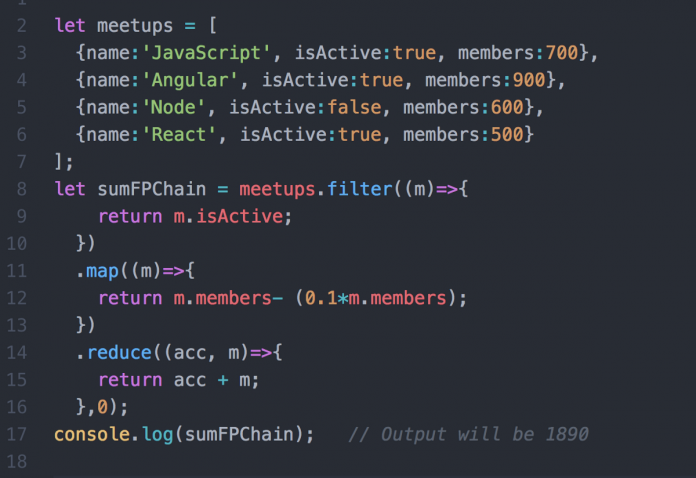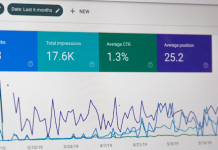There is a common query in the programmer circle. What is functional programming? Normally, programming usually exists for a much more extended period than object-oriented programming. So, this type of programming has taken a large portion of computer science.
Besides, programmers often consider it synonymous with purely programming. By the way, purely functional programming creates forms and breaks computer programs.
Popular languages such as Python Lisp, Erlang, Haskell, Clojure are functional programming languages.
Basically, this article will help those who are keen to know the basic idea of functional programming. Before you jump to the report, I hope you have essential C, C++, or Java knowledge.
So, you should know the basic concepts of computer programming terms.
So, What is functional programming?
Table of Contents
The History of Functional Programming
Mainly, the Lambda Calculus is the base of the programe. Also, Functional application, definition, and recursion was the main focus for creating this program. It was first launched in the 1930s.
Then, McCarthy began the first language called LISP. He developed it in 1960.
By the way, you may hear about the meta languages. It has a vital connection with programming. Then, a professor from the University of Edinburgh opened the idea of Meta Language (ML) in the ’70s.
Meanwhile, At the beginning of the ’80s, a language named Hope added algebraic data types. And finally, we saw the change of the functional language “Scala” in 2004. Mainly, we call them modern functional languages.
Types of Functional Languages
Finally, here is the short answer to your question “What is functional programming?”
However, there are two types of functional programming languages:
- Pure Functional Languages – This is the sole type of language. It only matches the applicable paradigms. For instance, Haskell.
- Impure Functional Languages – These kinds of languages support both functional paradigms and imperative style languages, such as LISP.
Here I Will List Some Of The Popular Functional Programming Languages
- Python.
- LISP.
- SML.
- Haskell.
- Clojure.
- Clean.
- Erlang.
- F#
- Scheme.
- XSLT.
- SQL.
- Mathematica.
Some of Functional Programming Terms and Definitions
Let us know some terms of programming. In this way, you will get a clear answer to your question: “What is functional programming.”
Immutable Data
The clarity of immutable data is simple. Some should be able to build data structures without remake ones that do exist.
Referential Transparency
FP should execute its action like it is for the first time. The method is easy and direct. It gives exact coding experience.
Hence, during the process, you will know what is happening.
Maintainability
It is a simple term that means programming is an easy one. You will always feel safe with your functions. You must not worry about changing anything.
Modularity
Modularity is another sound way of functioning. The design raises productivity. Moreover, you can code small modules very fast. Furthermore, you have a chance to reuse it whenever you want. Apart from it, it saves your time as you can test modules alone.
First Class Function
You will not face any barrier while using first-class functions. Actually, it is easy to use. Thereby, you might find it anywhere in your code. It is one of the top attributes of FP languages. The programmer uses it very often.
Higher-order Functions
Higher-order functions work in two ways. It can take another position as an argument, or it may return it as a result. So, This type of process is key to use.
This function might permit partial application. The technique will apply to a function one by one at a time. Therefore, each application will return a new role.
Function Composition
This type of function is very functional. It can reduce the effort of making functions. Function composition usually unites two or more than two functions to make a newer function.
Pure Function
As its name is a pure function, it also does pure works in function. It always states its inputs and never stays hidden. Besides, the outputs of pure functions are also outputs.
This type of function must return the result. Furthermore, it causes the same output as what you input as a parameter.
For example,
Function Pure ( x, y )
{
return x+y
}
Impure Functions
As we can expect, impure functions are not the same as pure functions. They always hide their inputs as well as outputs. That is why it is called impure. You will not be able to do the impure function alone because an impure function has dependencies.
For Instance,
Int z;
function notPure () {
Z = z+10;
}
Shared States
OOP programming has a vital idea called shared programming. Basically, this type of concept adds properties to objects. In short, if you take a hard disk as an object, storage and disk size will be added properties.
Side Effects
In the journey of what functional programming is, you have already known a lot of terms. Now let us talk about side effects. Side effects mean that if it acts outside, then it calls functions. By the way, you will struggle as an FP programming language expert.
Your main concern will be to tackle the side effects. Basically, you will need to part them from the rest of the code. Otherwise, it will badly affect your software code. It is key to take away side effects from your programming logic.
I hope you get a little idea of “What is functional programming?”
The Characteristics of Functional Programming
Below we will discuss the greatest feature of functional programming.
- Functional programming languages follow the idea of a mathematical function. Usually, this concept uses conditional expressions and recursion to do the computation.
- Basically, they shelter higher-order functions. You can find lazy evaluation features.
- This type of programming language never supports flow controls, for example, loop statements and conditional statements. Instead, they use the function as functional calls.
- Functional programming languages support famous ideas like OOP.
- Its way of work focuses on results, not the process.
- It breaks down the problem into functions.
The Advantages of Functional Programming
Till now, I guess you got a basic idea of your question, “what is functional programming languages?”. So, now you should know the benefits of functional programming.
- First of all, the most noted reason for loving functional programming is getting bug free code as it does not support the state.
- Secondly, it would be best if you took advantage of strong parallel programming. This type of language has no mutable state. Consequently, there will be no state-changing issues. Codes always maintain reusability and testability.
- Then, you can always run functional programming alone. The efficiency rate is still high.
- Nested functions support functional programming.
- You can play with Lazy set up such as Lazy Lists, Lazy Maps, etc.
- FP languages will help you to code efficiently with the error.
- It is to test and perform unit testing as well as debug code.
- This type of language is fault-tolerant.
- It helps to boost your productivity.
- Accepts nested functions.
- You can use Lambda Calculus validly.
The Disadvantages of Functional Programming
Although it has some downsides, however, the benefits always surpass the issue. Usually, functional programming needs large memory. I already mentioned that it does not have a state. As it does not have so, you will have to make new objects each time.
So, after knowing “what is functional programming?”. So, you should know the disadvantages too. Sometimes you will have to use a vast number of operations on the same set of data. Such as, artificial intelligence like machine learning uses LISP.
FP languages are a little bit different from other languages. It is tough to catch for beginners. You may face difficulties to maintain. You will even meet too many objects during programming.
The Difference between Functional Programming Vs. Object-oriented Programming
This chart will give you a glimpse of what is functional programming.
| Functional Programming | Object-oriented Programming |
| Functional programming uses immutable data. | OOP uses mutable data. |
| It always follows “What you are doing.” | Follow “How you are doing.” |
| Accepts Parallel Programming | It does not suit parallel programming. |
| Function call needs for flow control. | We can use loops and conditional statements for flow control. |
| There are no side effects. | The system can create side effects. |
| Usually uses the “Recursion” idea to iterate data. | It uses the Loop concept. |
| Statements order is not vital. | Statement order is very vital. |
| It accepts both “Abstraction over Data” as well as “Abstraction over Behavior. | It only accepts Abstraction over Data. |
I hope this chart gave a little sense of “What is functional programming?”
Comparison between Functional and Imperative Programming
An imperative is quite different from functional programming. So, the most vital contrast is that FP always ignores side effects. But side effects are used in imperative programming to act state and I/O. Pure functionality avoids side-effects. So, you will get transparency in coding.
And one more thing, you will rarely see that a higher-order function is used in imperative programming. However, you may see a loop used in traditional imperative programming.
On the other hand, functional programming will always use a higher-order function. Moreover, FP takes a function and list.
Practicing Areas of Functional Programming
Now you are another step ahead as you already know, “What is functional programming?” However, now you are going to understand where is practiced.
Academia
You will see a broad range of programming studies in language theory. Nowadays, there are a lot of publications focusing on programming. One of them is the ICFP.
Prominent publications such as Symposium on Trends in Functional Programming also do some work.
Industry
Nowadays, a massive number of industries are using functional programming in their industrial applications. For instance, we can say about Erlang. Also, a Swedish company Ericsson programmed the Erlang in the 1980s.
Programmers usually took Erlang as fault-tolerant communications systems. After a few times, it has become famous for building applications. Then, big companies such as Facebook, Nortel, and WhatsApp took advantage of Erlang.
I talked about Scheme. Basically, Scheme is a dialect of LISP. In early times, Apple Macintosh computers used this for their various applications. They use this to train simulation software.
After that, a lot of financial analysis companies used OCaml. OCaml came on the market in the 1990s. Programmers also use this on driver verification, industrial robotics.
Haskell was one of the most sought FP programs of that day. Primarily, it was launched for a research language. So, You cannot imagine that aerospace systems also bese in this language.
And not only aerospace but also web design and programming and the hardware design industry used this.
Education
Nowadays, It is common for universities to teach functional programming languages to their undergraduate students. Universities put their course of FP programming language friendly. So, Students also love it as their subject of study.
Some students begin their programming learning with these languages. So, this language is also used outside of the computer science world. They use it as a method of teaching problem solving, geometric and algebra concepts.
So, It is also used for teaching classical mechanics in Structure and Interpretation of Classical Mechanics often.
Final Thoughts,
So, This definitive article may not give you an answer to your query, “What is functional programming?” By the way, it is just a definitive guide, as well as not a final copy. Compared to OOP, the purpose of these languages are to copy the mathematical functions.
Generally, FP programming is a broad niche to discuss. So, The industry behind it is large. Basically, programmers lose their focus on terms rather than the ideology behind it.
So, These languages create a way of simple coding. Secondly, The pattern and the way to write code is not tied to a set plan. For example, once you catch the deep inside of FP, you can apply it inside object-oriented patterns too.
Functional Programming is not limited to higher-order functions or immutability. So, It has a vast area of the programming world. So, It makes a way of thinking about software. As you know, it focuses on results, not in the process.
By the way, functional programming is not easy for the newbie. So, when someone has a question like “What is functional programming?” Also, he must have enough prior knowledge about software engineering and coding.








